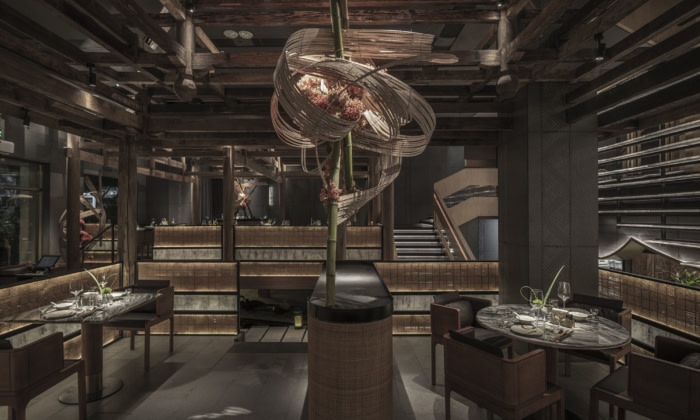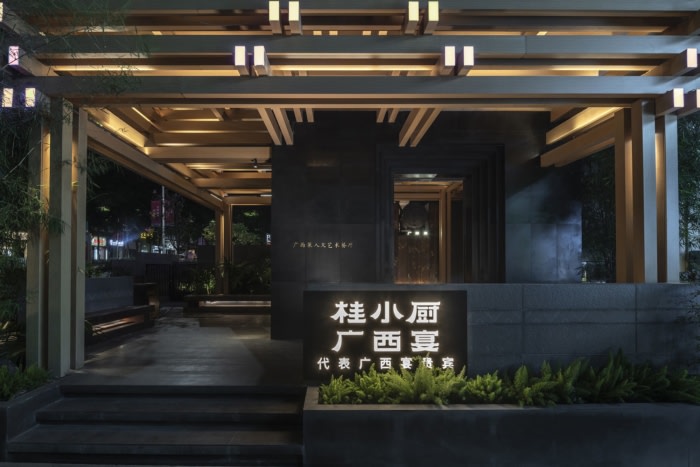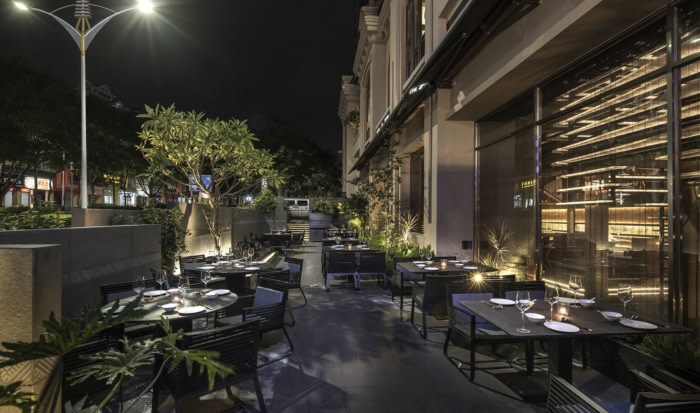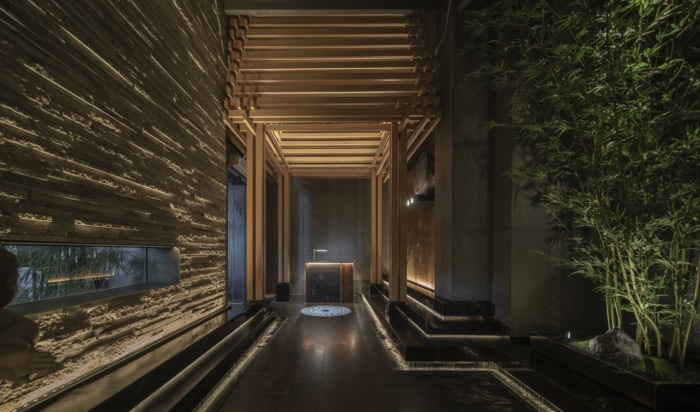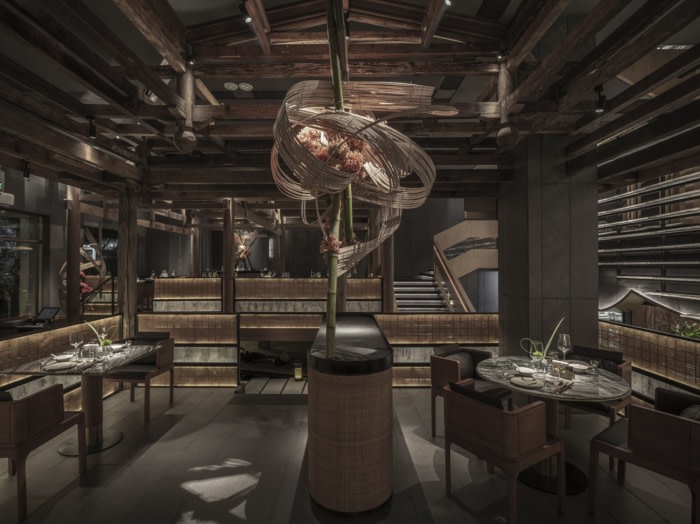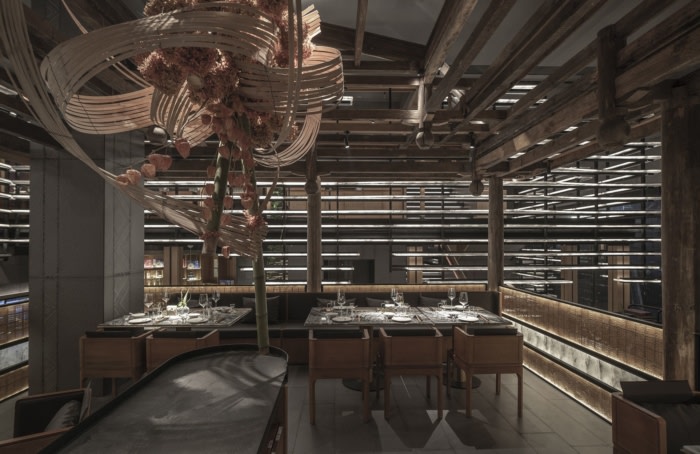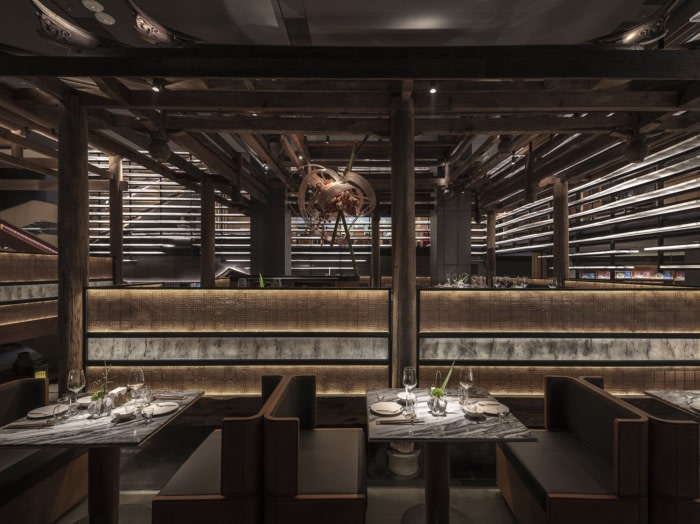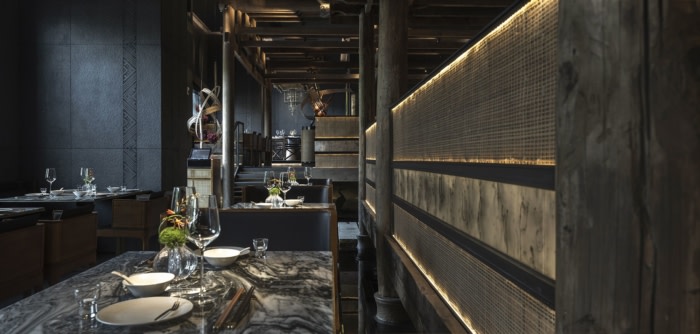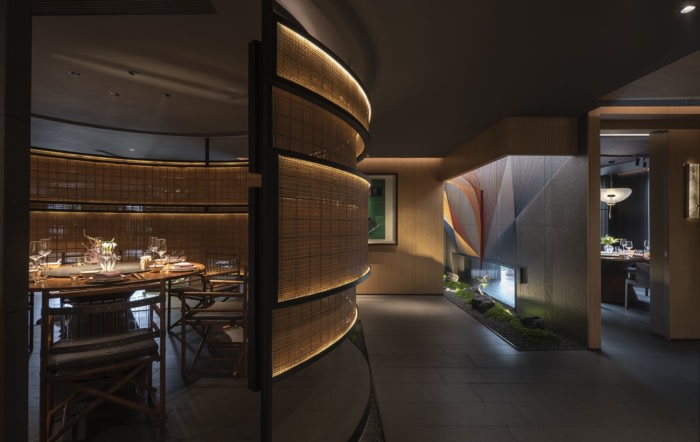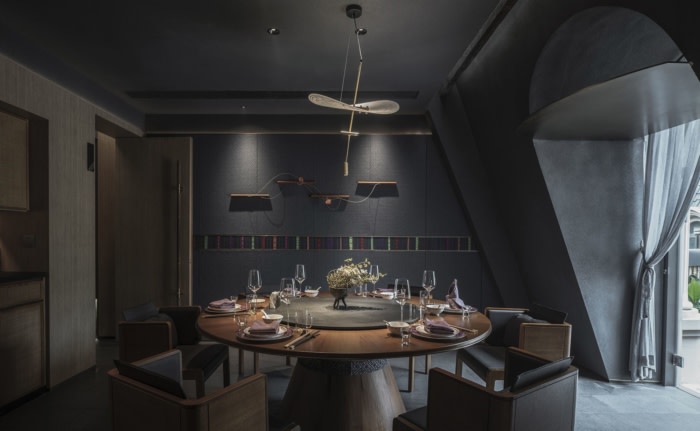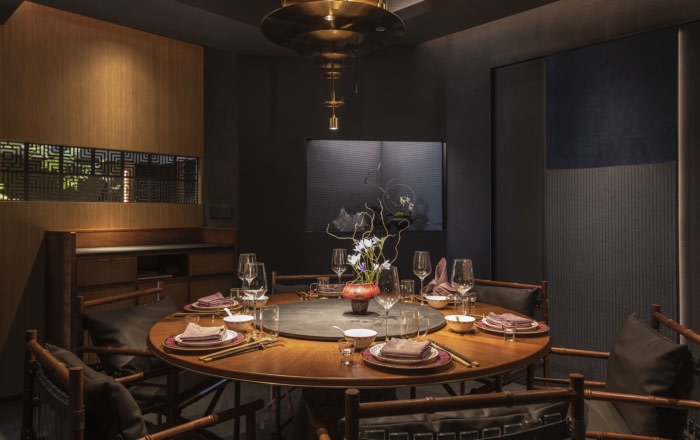Guangxi Yan Restaurant
WUXING YOUXING SPACE DESIGN takes guests on a journey from Guangxi landscape to the dinner table to reveal distinctive regional features, that enables diners to perceive the values in the immersive ambience at Guangxi Yan Restaurant.
The restaurant Guangxi Yan adopts traditional Guangxi cultural elements as the design thread, which unifies the overall spatial design. Numerous representative local elements are presented in the space after systematic concentration and artistic refinement.
The facade of the restaurant resembles a sumptuous drum tower, a representative topology of local traditional architecture. When entering the hall, guests are greeted by two roofless Zhuang houses featuring mortise and tenon structures. This roofless design is derived from the tradition of Zhuang people, who invite honorable guests, relatives and friends to join the banquet held in newly roofed and built house for celebration. The hall is where the Guangxi Yan unveils its prelude.
As far as the sight reaches, Guangxi elements are everywhere throughout the space. The landscape of Lijiang River, rock paintings of Hua Mountain, Longji Rice Terraces, Zhuang silver ornaments, bronze drums, Zhuang brocade, Zhuang tie-dye, Zhuang embroidered balls, Zhuang People’s March 3rd Festival, those elements seem to be independent from one another and each has its unique system in separate spaces, yet they remain connected in the ethnic culture of Guangxi. Behind the door of each private dining room, there is a unique mysterious realm revealing diverse Guangxi culture.
Modern expressions are adopted to translate traditional elements, which is the key of the design. The partition in the atrium extends from the first floor to the third floor, producing a magnificent effect. Made of translucent, ink-wash resin materials, it mimics local karst topography characterized by undulating mountains and winding rivers. As the line of sight extends, the partition seems to undulate as rolling hills and flowing rivers. The micro mountain and water landscapes, which are elaborately designed yet arranged in a seemingly random way, echo the partition, whilst also showing the fusion of the real and the virtual and bringing in nature. The overall design recalls a picture of distant mountains, gurgling water, lush trees and grey stones on the land of Guangxi. With twisting road, stream, bridge and house elements around, the space portrays a picture that people hold a great banquet to celebrate the completion of a new residence. The objects and emotions resonate with each other.
Traditional elements are showcased in an unconventional and unique form, such as the sculpture that depicts a distinctive scene, the characteristic pattern of the Zhuang brocade embedded in the staircase handrails, the curtain decorated with Zhuang silver ornaments, the bronze drum-shaped lighting fixtures, the thematic art installations on the wall, and the traditional symbols inlaid on wood and carved on stones, all of which well blend the regional ethnic features with Oriental ambience.
Traditional scenes, such as hydrangea flowers that imply warm welcome, bronze drum worship ceremony and the Gexu Singing Festival held on March 3rd, are extracted and translated into scenes through abstract expressions, so as to inherit local millennia-old cultural heritage and show the pride and glory of the Zhuang minority.
Guangxi Yan creates a splendid space empowered by engaging natural landscape and rich culture of Guangxi. Local scenery, history and humanistic aesthetics nurtured by beautiful landscapes are converted into dining scenes. With an innate purity and primitiveness, this space is like a hidden treasure waiting for guests to explore and unveils its beauty.
Design: WUXING YOUXING SPACE DESIGN
Design Team: Wei Zhixue, Gao Yuan, Xie Kaiming, Wu Guibi, Pan Ping, Jiang Renpu, Huang Lei, Yu Yuanhui, Xu Peng, Qian Zhendie, Chen Wenjie, Liu Sicen, Zhang Duo, Sun Zheng
Photography: Pan Jie

